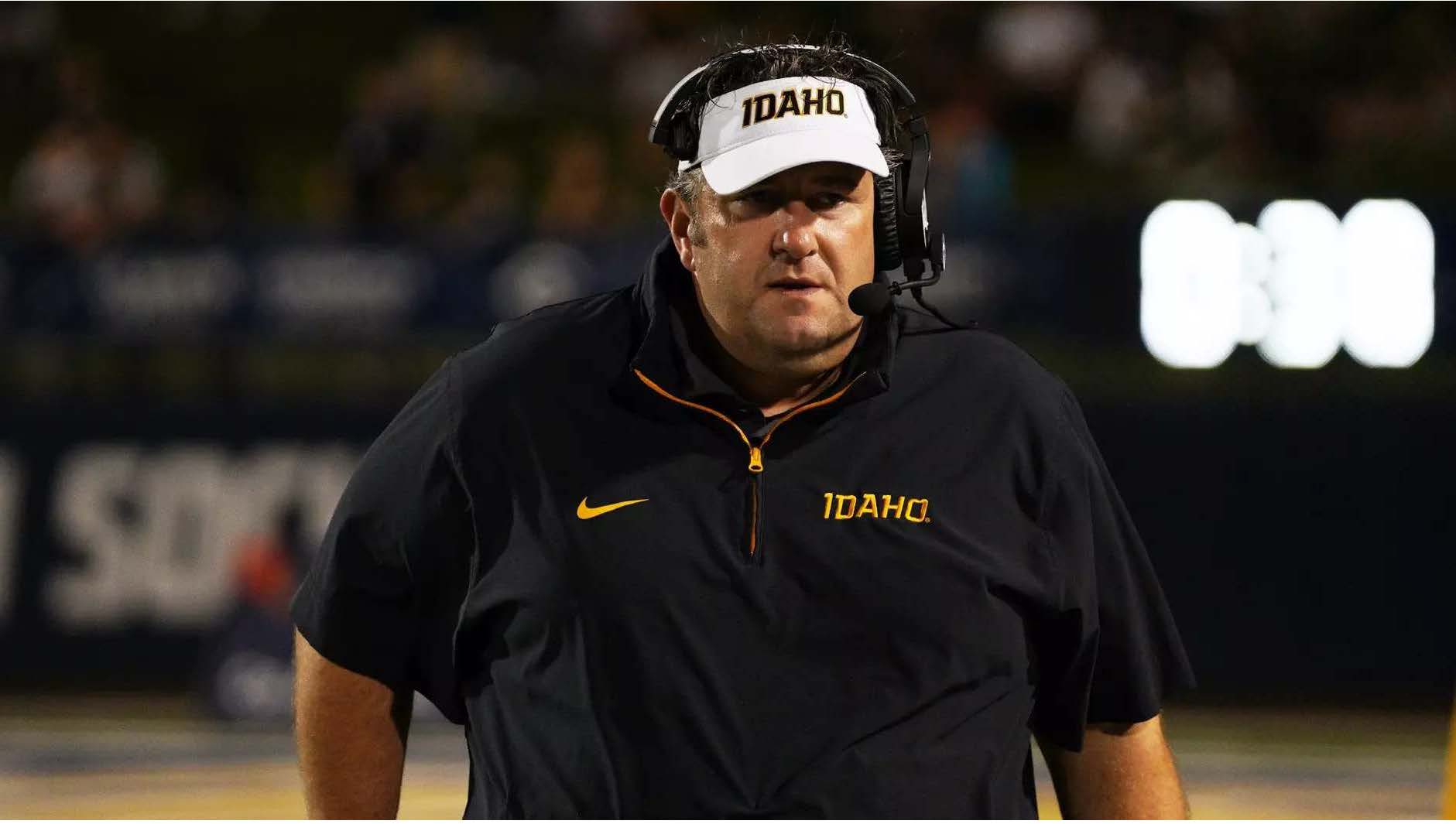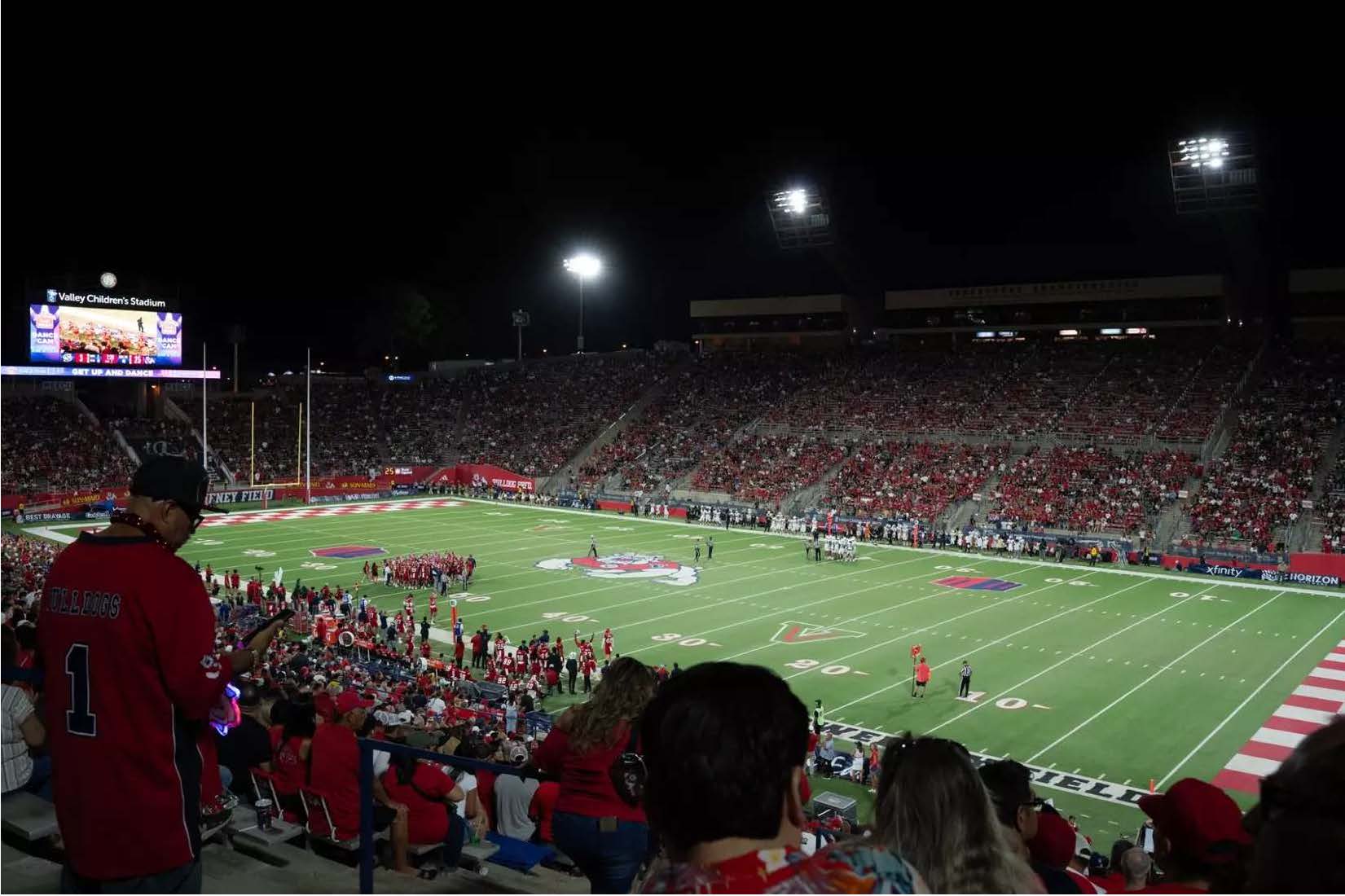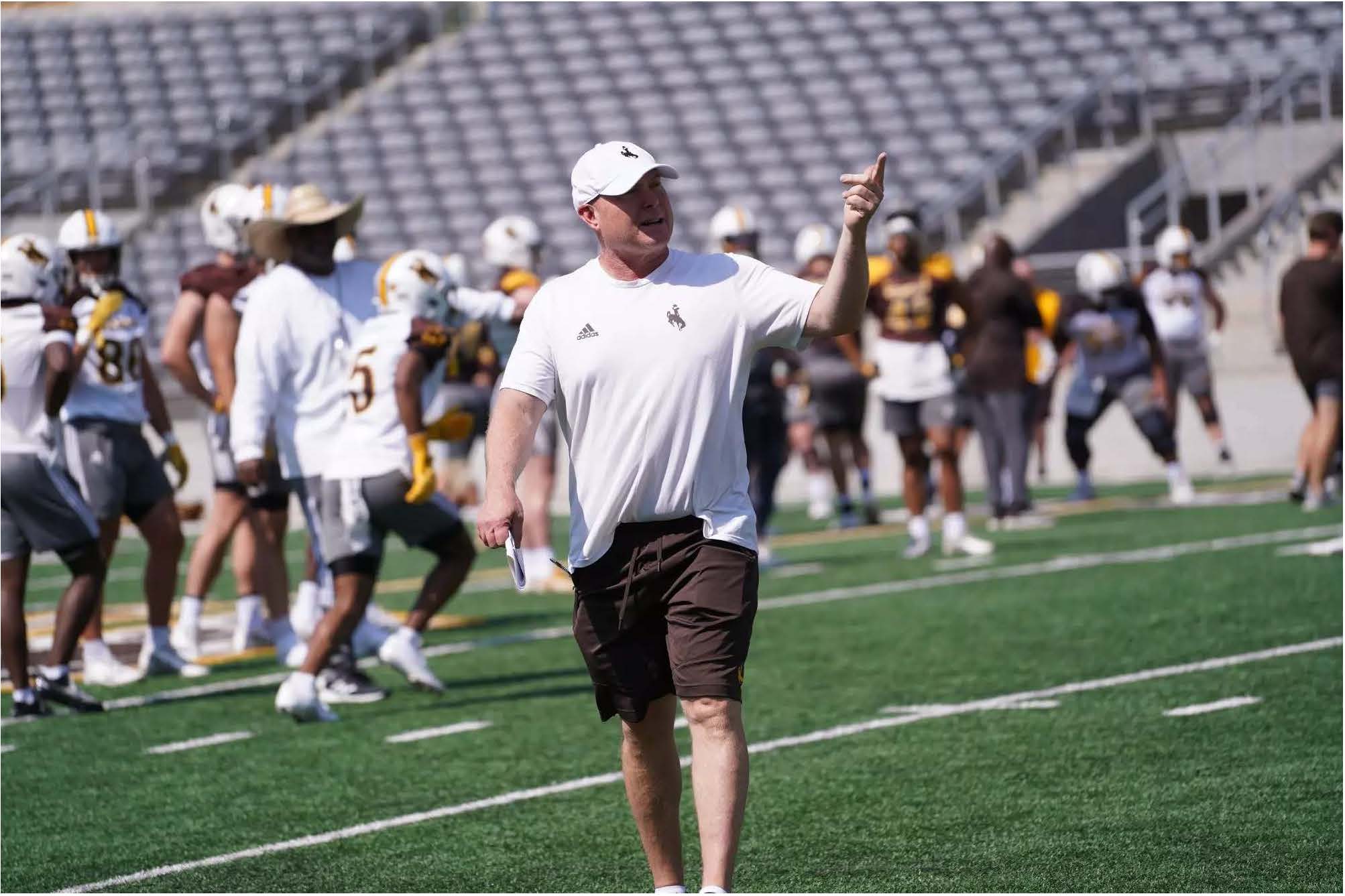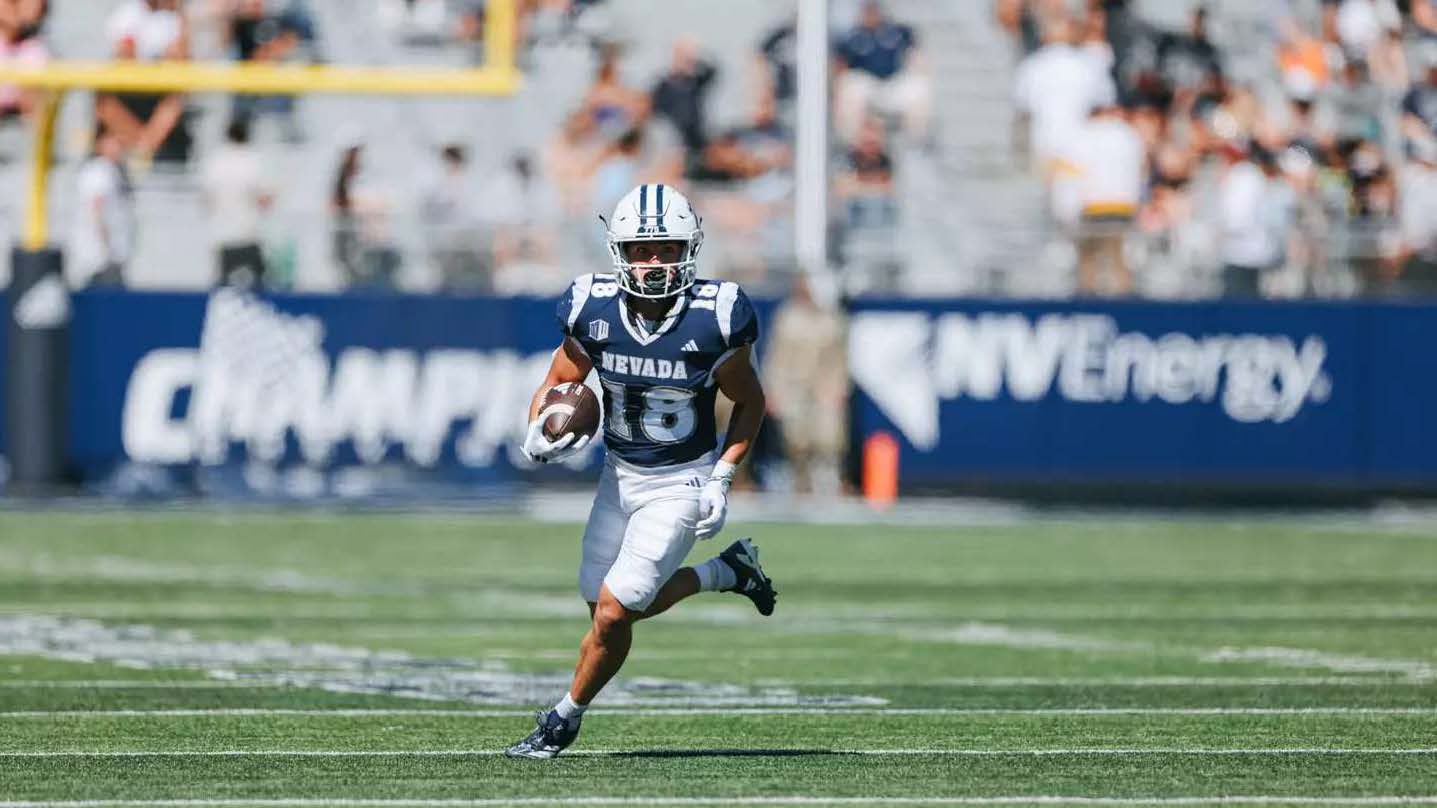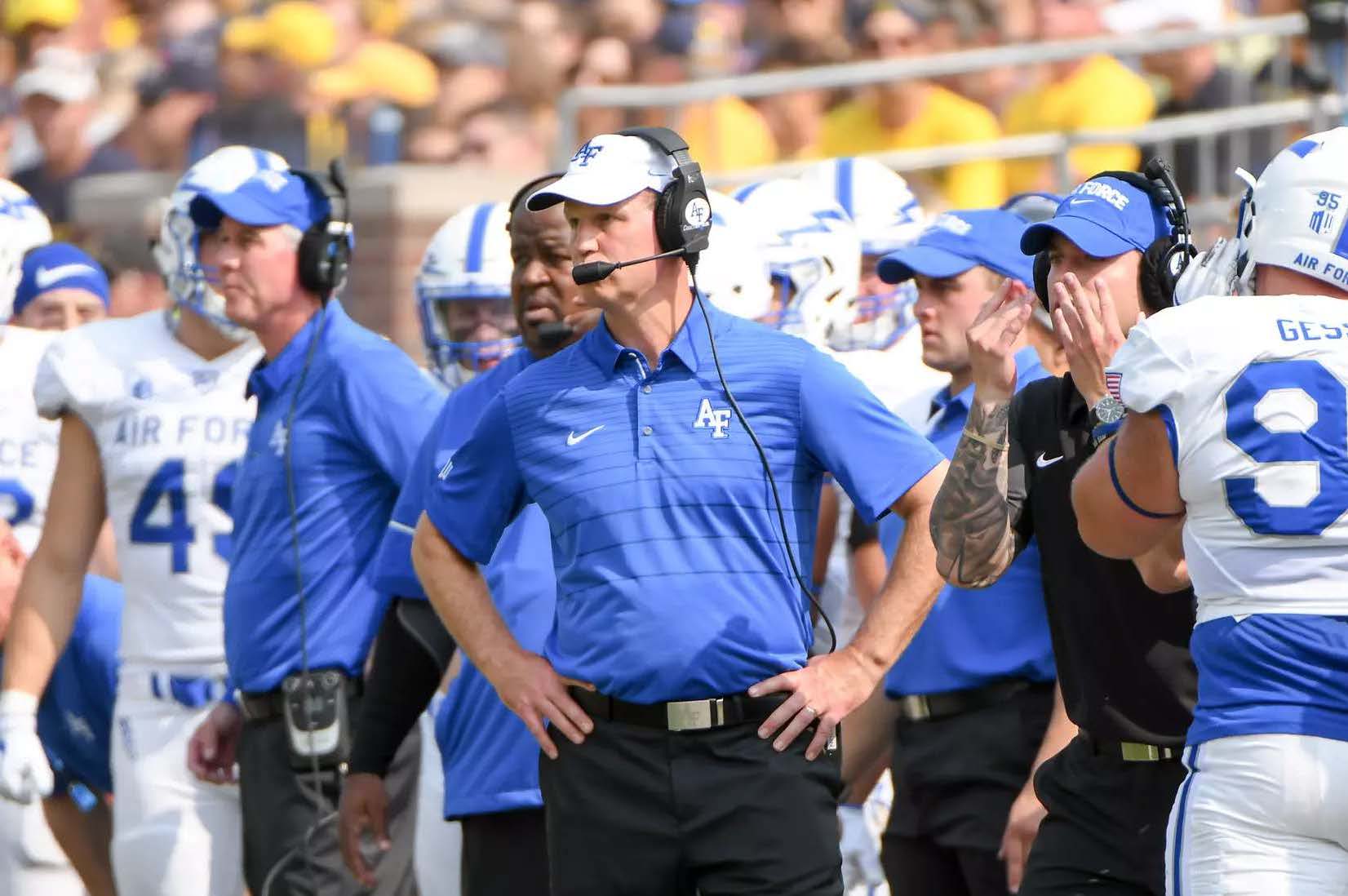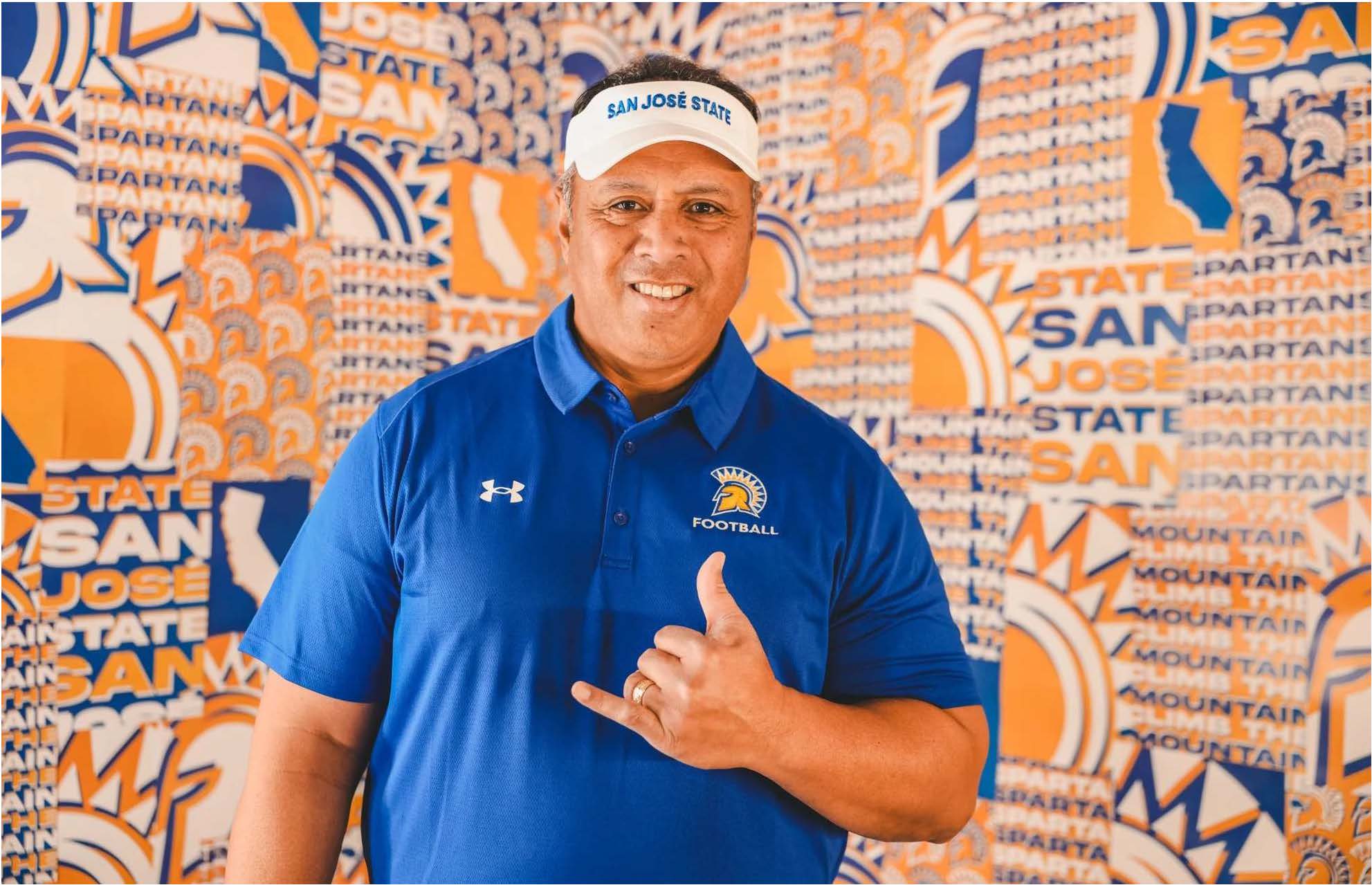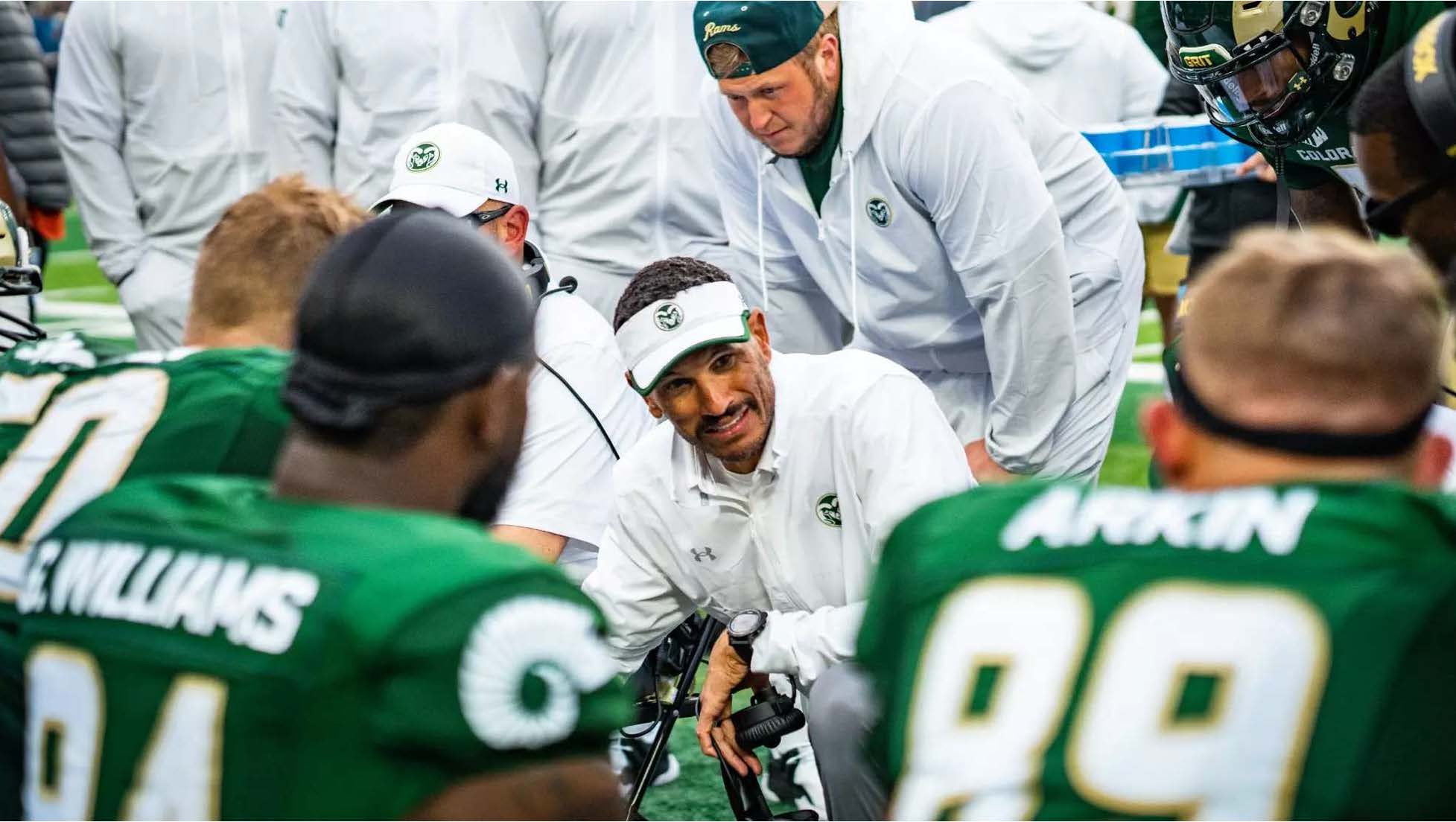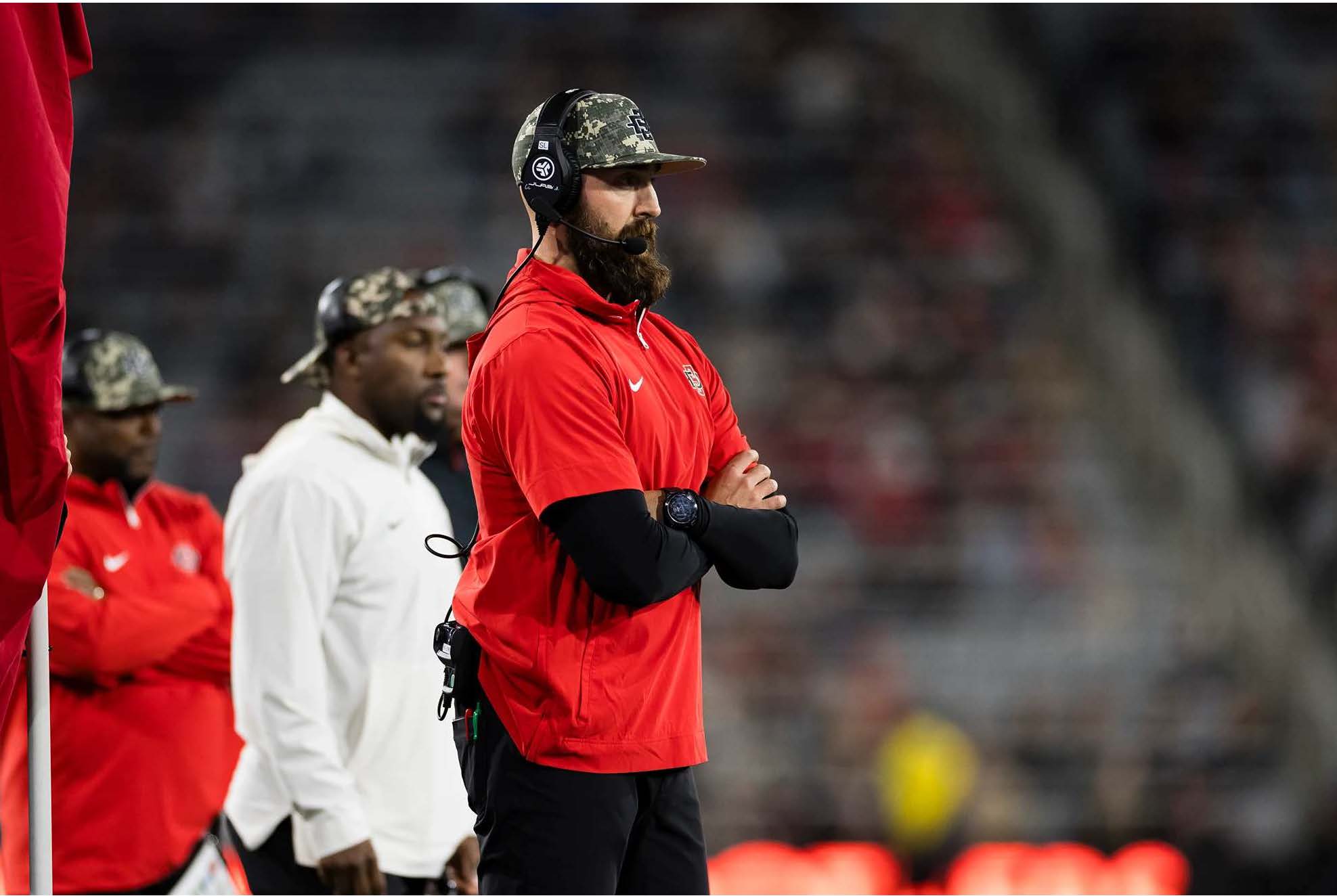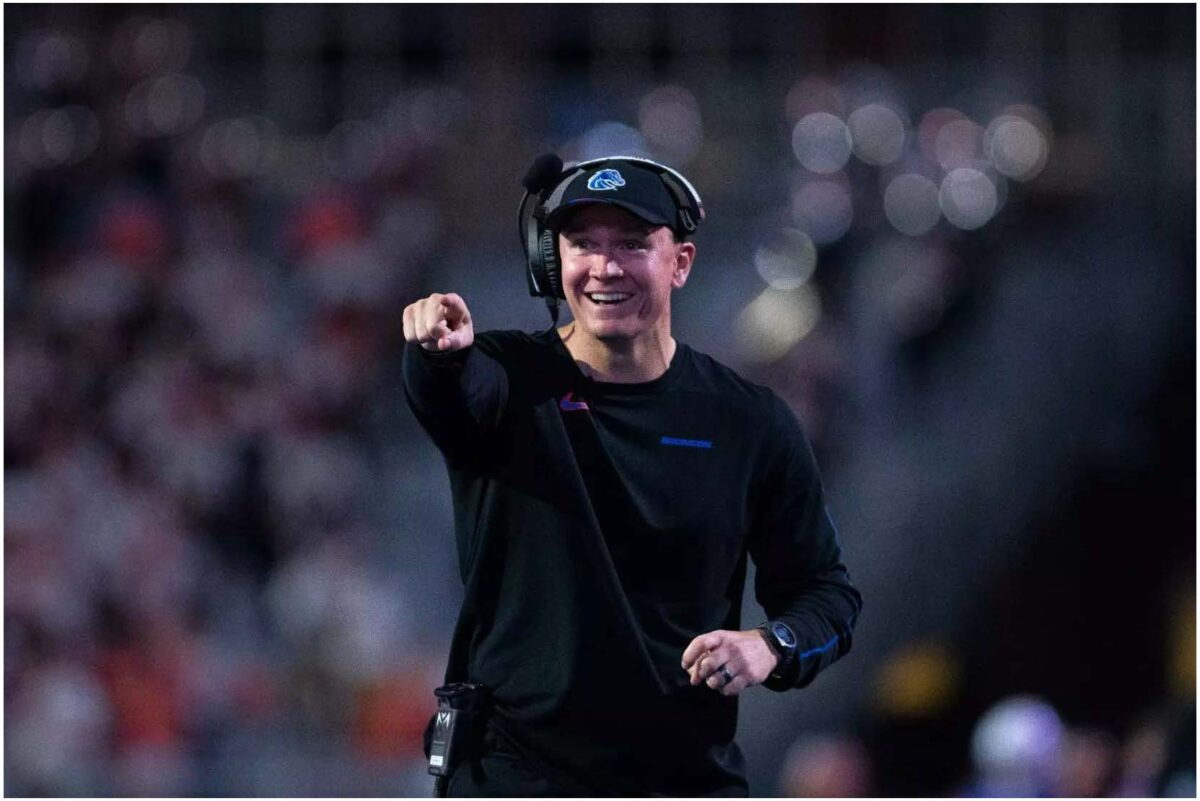
Blog Article
Spencer Danielson’s Coaching Performance: The 2025 Test That Will Define His Boise State Football Legacy
Boise State Football’s Spencer Danielson walks into 2025 with a hot seat rating of 1.073 and zero pressure to save his job.
But here’s what nobody is talking about: this season represents the most brutal coaching evaluation of his career. Danielson must replace generational talent, navigate the program’s toughest schedule in years, and prove his 15-3 record wasn’t just a result of good fortune with elite players.
The numbers from 2024 paint a picture that should terrify any coach facing similar circumstances. Ashton Jeanty rushed for 2,601 yards and 29 touchdowns while finishing as Heisman Trophy runner-up. The offense averaged 37.3 points per game, ranking fifth nationally. The defense generated 55 sacks, ranking first in the nation.
Now all of that production walks out the door.
The Coaching Metrics That Reveal Everything
Danielson’s 83.3% winning percentage trails only Chris Petersen’s legendary 88.5% mark in program history.
But the context matters more than the percentage. Petersen inherited established systems and built gradually. Danielson took over a 5-5 team mid-season and immediately produced three consecutive victories, becoming the first interim head coach in FBS history to win a conference championship game.
This accomplishment required:
- Instant roster evaluation under maximum pressure
- Scheme adjustment with zero preparation time
- Leadership establishment during program crisis
- Game planning against opponents who had months to prepare
Most coaches fail catastrophically in these circumstances. Danielson thrived.
The Offensive Coaching Evolution Nobody Saw Coming
Here’s where Danielson’s coaching performance gets interesting.
Defensive coordinators typically produce conservative offensive philosophies. They focus on ball control, field position, and avoiding mistakes. Danielson shattered this stereotype completely.
Boise State averaged 466 total yards per game in 2024 with 225.6 passing yards complementing the rushing dominance. The coaching staff built schemes around Jeanty’s unique skill set while maintaining balanced attack principles that stressed defenses horizontally and vertically.
This dual-threat capability required sophisticated play calling and personnel management that many defensive-minded coaches struggle to implement. Danielson mastered it in one season.
The 2025 Replacement Challenge That Exposes Everything
Losing Jeanty forces Danielson to completely reconstruct offensive identity around a committee approach.
The numbers are stark:
- Jambres Dubar: 99 rushing yards in 2024
- Dylan Riley: 135 rushing yards
- Sire Gaines: 156 rushing yards in limited action
Combined, these three players produced fewer yards than Jeanty averaged every four games. This isn’t a depth chart adjustment. This is offensive philosophy reconstruction from the ground up.
Danielson’s coaching response centers on scheme diversification rather than finding a single replacement. Smart coaches understand that personnel limitations necessitate tactical innovation, not rigid adherence to a system.
Defensive Coaching Performance: Strengths and Glaring Weaknesses
The 2024 defense generated 111 tackles for loss, ranking third nationally.
But the pass defense allowed 241.4 yards per game, with road performance deteriorating to 276.2 yards per game. The graduation of four senior defensive backs exposes potential coaching failures in depth development or recruiting evaluation.
Danielson’s response involved adding six transfers, including:
- Demetrius Freeney from Arizona
- Jeremiah Earby from California
- Four additional players bringing multiple years of experience
This transfer portal activity suggests recognition of internal development shortcomings. Good coaches adapt when internal systems fail.
The Penalty Pattern That Reveals In-Game Management Problems
Boise State averaged 46.2 penalty yards per game but spiked to 70 yards per game in their two losses.
This 51% increase in penalties during defeats suggests a coaching struggle in maintaining discipline under pressure. Elite opponents exposed composure deficiencies that better preparation should have prevented.
Successful coaches drill situational awareness until it becomes instinct. Danielson’s penalty patterns indicate this drilling was insufficient against superior competition.
Roster Management Coaching in the Transfer Portal Era
Danielson retained 13 players who were “illegally recruited” by other programs during the 2024 season.
“I know for sure of 13 that are getting illegally recruited to get in the portal and get paid all this and that,” Danielson revealed. Yet zero players transferred during the season.
This retention success required:
- Individual counseling with players and families
- Future planning that extended beyond single seasons
- Authentic relationship building rather than transactional interactions
- Counter-messaging against external recruiting pressure
Most coaches lose multiple players to this pressure. Danielson lost none.
The Schedule Management Test That Changes Everything
The road trip to Notre Dame on October 4 presents the highest-profile coaching challenge in recent program history.
Danielson must prepare his team for hostile environment, superior talent, and national television pressure while managing a roster with limited big-game experience. The Mountain West road games at Air Force, Nevada, and Utah State require constant adjustments.
Home versus road performance reveals coaching adaptation challenges. Boise State went 7-0 at home, averaging 491.4 yards and 41.7 points per game. Road statistics were significantly lower.
This 50-yard difference in offensive production indicates coaching struggles with environmental adaptation.
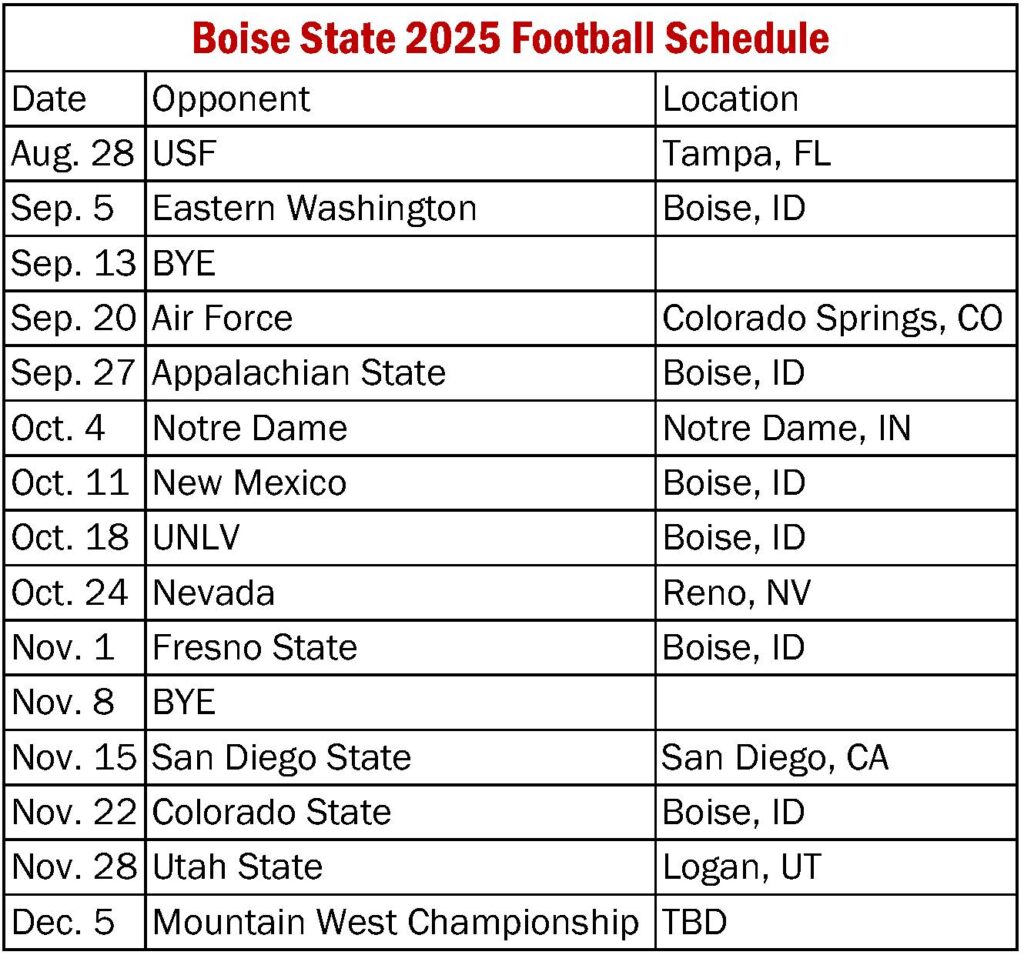
Special Teams Coaching: The Immediate Performance Concern
Kicker Jonah Dalmas (100% on extra points, 72.2% on field goals) and punter James Ferguson-Reynolds (43.5 yards per punt) both graduated.
Danielson’s coaching response emphasizes “coverage and return units” while new specialists develop. This suggests pragmatic acceptance that immediate replacement is unrealistic.
Special teams failures often determine the outcome of close games. Danielson’s coaching record includes no evidence of successfully developing specialists from inexperienced players.
The Faith-Based Leadership That Creates Recruiting Advantages and Limitations
“I give Jesus all the glory. I know that’s the only reason that I’m here. I’m so thankful that He put me in this seat,” Danielson stated after victories.
This authentic leadership resonates with specific recruitment demographics but may limit its appeal in an increasingly diverse roster construction. Coaching performance must strike a balance between personal authenticity and inclusive team building.
The team’s record GPA in Fall 2024 demonstrates that Danielson’s emphasis on comprehensive player development yields measurable academic results that extend beyond the football field.
Contract Extension: Institutional Confidence with Performance Pressure
The five-year deal, which runs through 2029 and averages $2.2 million annually, represents a significant investment.
“Spencer has proven to be the right leader at the right time for Boise State football and our university as a whole,” Athletic Director Jeramiah Dickey declared.
However, this confidence was earned during an exceptional season with elite talent that may not be repeatable. Contract security creates both comfort and heightened expectations for sustained performance.
The 2025 Evaluation That Determines Everything
Success in 2025 would establish Danielson among elite Group of Five coaches and validate his systematic approach to program building.
Failure would raise questions about whether his early success was due to circumstances rather than coaching excellence. The hot seat rating of 1.073 provides current security, but coaching performance is evaluated continuously.
Danielson’s coaching performance evaluation must account for the fundamental transformation of college football during his tenure. The transfer portal, NIL compensation, and conference realignment create coaching challenges that previous generations never faced.
His adaptation to these changes, while maintaining competitive performance, indicates a coaching evolution that many veteran coaches have struggled to achieve.
The 2025 season represents the definitive measurement of Danielson’s long-term coaching capabilities.
